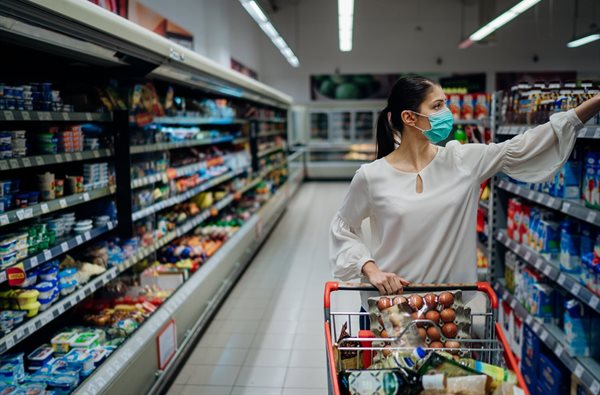






This was just one of the insights shared at a Nielsen industry webinar Life Beyond Covid-19: Rebound, Reboot or Reinvent.
Speaking during the webinar, Nielsen South Africa Connect MD Kelly Arnold commented, “The longer consumers remain in restricted living conditions, the more significant the economic, financial and social impacts will be and the more time consumers will have had to significantly adjust their behaviour and consumption dynamics and adopt these habits as necessary or entrenched behaviours.”
Against this backdrop, Nielsen has assessed various future scenarios to establish a clear Regeneration path for retailers and manufacturers based on short, medium, and long term exit time horizons.
The framework: Rebound, Reboot or Reinvent, takes into account global macro conditions such as unemployment, bailout packages, and interest rates along with attitudinal inputs from consumers’ purchasing preferences based on governments response to healthcare and disease management, thereby linking into expected future FMCG sales.
In countries where consumers spend less time in lockdown, Arnold explained that there will possibly be more partial impacts, where countries and companies will be able to Rebound more easily to prior conditions, patterns and habits.
The longer consumers spend in restricted living, the greater the economic, financial and social impacts will be. The consequences will become exacerbated and require strategies to Reboot economies and consumption.
In the third time horizon, consumers may spend up to nine months or more in highly restricted living conditions, and will be faced with severe economic, financial and social shocks, which will heavily impact future, post lockdown living standards and conditions.
Business strategies in these environments may require significant Reinvention to re-establish product portfolios and attributes, which are relevant to drastically altered consumer means and needs.
Across these scenarios, Nielsen has identified six major areas of change that will impact consumption dynamics.
In the initial Rebound stages consumers may be able to add back some discretionary spend (fashion, home/tech upgrades, local holidays) but out of home consumption is likely to remain subdued due to ongoing precautionary measures. ‘Homebody Economies’ will benefit at the expense of out of home wallet allocation (restaurants, entertainment, takeaways).
Within each consumption environment, Nielsen has identified two types of consumers, namely Insulated Spenders who are able to buy what they want and need, are predominately higher-income individuals and have not experienced an employment impact, and Constrained Spenders who are predominantly lower-income, have experienced a severe employment impact and are only able to afford the basics.
With polarising ability to spend, Insulated Spenders in earlier emergence stages, will initially splurge on discretionary grocery items post lockdown and take a break from pantry filling for home prepared meals, adding back takeaways and home deliveries. Constrained Spenders may add back some protein, dairy, confectionary and beverage treats, but on a smaller scale.
New shopping habits will also become entrenched as evidenced by 66% of South Africans who say they have reduced shopping in supermarkets and 65% who have reduced shopping in spazas.
The lockdown period has seen a significant decline in promotional activity which will provide the unique opportunity for manufacturers and retailers to reset the depth and frequency of future promotional cycles.
As lockdown is gradually lifted the nature of promotions are likely to change with promotional budgets possibly allocated to maintaining everyday low pricing or price caps on essential items for severely constrained and vulnerable consumers.
Health, safety and quality assurances have become important accelerators in brand and product decision making and will remain significant choice drivers into the future. Consumers will increasingly look for hygiene, efficacy and immunity attributes ahead of sustainability and environmental product claims.
Due to occasions of product shortages and out of stock situations during the lockdown period, consumers moved to what was available, which was often locally sourced. As global supply may remain obstructed for many months to come, consumers will increasingly rely and depend upon local and micro-local supply.
To protect and rebuild local economies governments may implement incentives and policies to protect local manufacturers. This will allow for lesser-known local brands to strengthen their positioning and expand their footprint.
Many brands have struggled to determine their optimal level of marketing and advertising during the lockdown period. As brands start to reinstate their marketing activity they will need to look at where audiences have shifted in terms of their listening, viewing, engaging and socialising, and consider how they will need to repair broken, or strengthen new relationships, via their messaging, tone and content.
Brand legacies during Covid-19 will echo into the future, with brands assessed and treated based on their action and inaction.
Looking ahead, Arnold said that the seismic and unforeseen shocks from the global Covid-19 pandemic will draw consumers, industries and societies into a course of restoration and renewal as they look to revive growth.
“As FMCG manufacturers and retailers reflect, rebuild and reconsider the orientation of their businesses and brands for the future, they will need to base their ecosystems and strategies upon a deep understanding of what economies and consumers have endured and how they will emerge. In line with this they will need to urgently examine the range of products being offered and the pricing dynamics to get to grips with the raft of rapidly changing demand dynamics across all channels,” Arnold concluded.